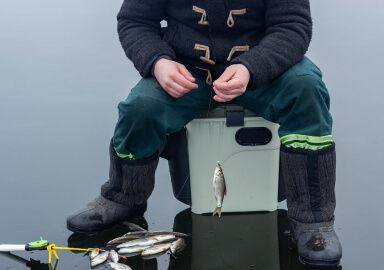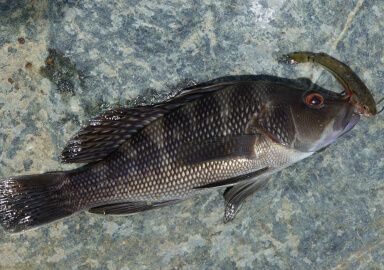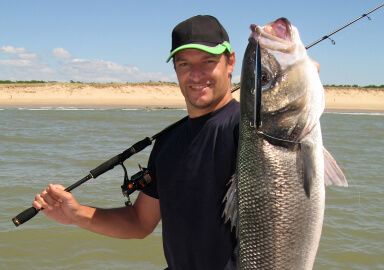White Seabass
White seabass is a medium to large pelagic predator found along the western coastline of the USA and popular among recreational anglers.
View 1 listing
1
listings
–
price starting from
1
countries
–
to the nearest trip
About White Seabass
White sea bass (Atractoscion nobilis), also called white weakfish, is an important recreational, and also commercial, marine fish species. By far the largest of the “croakers”, white sea bass are cylindrical and elongate with large eyes and a big mouth with a row of small teeth for holding fairly large prey items. The lower jaw of the mouth protrudes slightly in front of the head. They are generally shiny blue or grey above, with silver bellies and young fish have vertical dark bars (parr markings) down the body. The white seabass grows fairly rapidly and can reach a maximum size of 152 cm (60 in.) and a mass of 33,2 kg. (73.1 lbs.) while, by about 5 years of age, most are mature at about 3,4 kg. (7.5 lbs.) and may have already spawned once.
White sea bass feed mostly on small fish such as sardines and anchovies and, as they grow, the food items also usually increase in size. Adults eat large quantities of mackerel and many squid. Juveniles live close inshore, in bays, lagoons and estuaries and, as they grow, generally head into progressively deeper waters. Adults often form large shoals of mostly similar-sized fish. These move readily, with a general northwards and often offshore movement in summer, to find food and cooler conditions and the reverse in winter.
How to Catch?
White sea bass can readily be caught from the shore or from small or charter boats depending on time of year, local conditions and the preferences of the angler. Medium to heavy spinning tackle is usually used and, in some areas where large sea bass come close inshore, shore fishing can be quite easy, fun and productive. Most shore fishers use natural bait but live bait, such as sardine, mackerel or even squid, is usually the preferred option. Smaller individuals are more easily caught from the shore while most fish caught in deeper waters are somewhat larger.
Boat fishing is very popular and successful in many areas and good charter boats are to be found in most localities. These boats and crew will have all the local knowledge, specialised equipment and know-how to get you to the fish and also to optimise your chances of landing a good-sized sea bass. Local charters will also know where the schools of large fish may be and know how to identify them, among other species on a scanner, and assist you to get the correct bait right into the shoal. Drifting can be successful but, under calm conditions, anchoring the boat in an area rich in shoals of white sea bass can result in the capture of many good fish with little change of locality, tackle or bait. Chumming, especially around a fish being landed, can enhance your chances of landing good numbers of sea bass.





